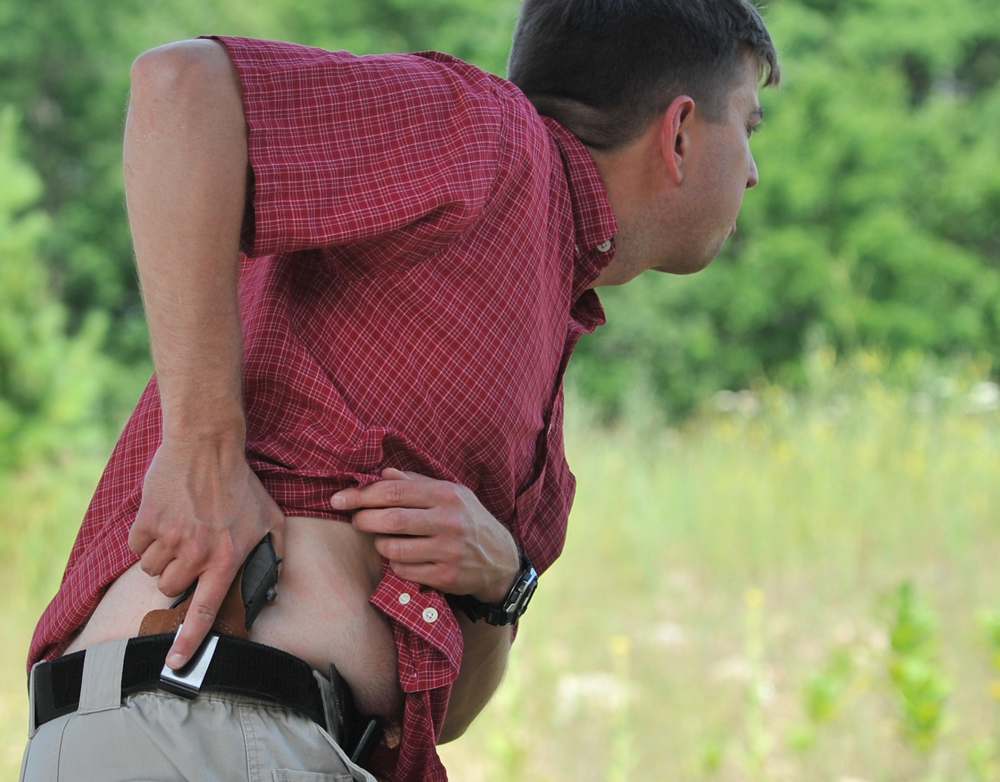At GunDigest, we independently review products. However, we may earn a commission when you purchase through links on our site. Learn More
Concealed Carry Tactics: Forget Fast, Get a Good Ready

Here are 3 reasons why you should take the “Good Ready” approach rather than rely on quick draw when it comes time to defend yourself with a handgun.
Back in the day, we referred to pulling the gun from a holster as “the draw,” and speed of the draw was a much sought-after skill.
If a cop in training couldn’t get the gun out of a retention duty rig and engage a target (starting with a good grip on the gun) in less than one and a half seconds, they were not ready to go on the street.
With fast hands and lots of practice, an officer can punch out two rounds center mass at contact distance, in about three-fifths of a second.
Cops have to be fast because their job requires them to closely approach an unknown-risk subject. It may place them behind the action curve if that subject makes a quick move for a gun or knife.
If you're not a police officer, you (thankfully) don’t have that obligation and I would much rather you concentrate on a “good ready” than a quick presentation. Here’s why:
- Practicing “quick draw” is one of the most dangerous of all firearm training activities (which is why most ranges prohibit shooting from the holster). Keep your trigger finger outside the guard until you are on target. Do not practice fast presentation with a loaded weapon! Have a room for presentation practice only and never take ammo into that room.
- Many concealed carry holsters do not stand up well to repeated grabs. If you are truly committed to becoming smooth and quick — and that means at least 250 replications — get two identical holsters, one for practice and one for regular wear.
- When pumped up on the adrenalin rush of a sudden threat, fumbles are likely. It's better to get a good, early grip on the gun rather than rely on speed of the draw, if at all possible.
What is a “good ready” for a civilian? It means situational awareness at all times and taking proper defensive action prior to the need to present the weapon.
From one hundred feet, identify potential threats and move laterally to avoid them. From fifty feet, if you have a specific threat, and the totality of the situation demands it, go to your shooting stance and get your hand on the gun under the concealing garment. From twenty feet, if the threat has the apparent intent and capacity to do you lethal harm, smoothly draw and present in a “low-ready” position and issue your verbal warnings. From closer than 20 feet, an attacker can close the distance and grapple you before you can get the gun out.
What about crowds? If the sociology of the crowd is benign then stay to the edge, note your exits, have a discrete impact weapon in your hand and hope for the best. If the crowd is questionable, you have already made two tactical mistakes: You have sacrificed distance and voluntarily placed yourself in a high-risk environment. (Let’s see if you can explain that to the D.A.)
If you carry a gun but not a badge don’t worry about “fast.” Instead put time on your side … and get a good ready.
Editor’s Note: Got a question for Joseph Terry about concealed carry not covered here? Log in and post your question in the comments below.